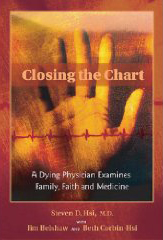John Fleck, the Albuquerque Journal’s science writer, has a fine love story up on his blog — jfleck at inkstain. Page down just a bit and you’ll see it. It’s just below “Texas Drought.” It’s timing was perfect, Liz and I having just returned from a game Friday night in which we found ourselves in seats we don’t normally occupy.
John’s story is beautiful for lots of reasons, not the least of which being that it could be written only with baseball as the backdrop. It is the most social game we have, the only one given to love stories. Stories like John’s don’t come down from the stands in a football game or a tennis match or a hockey fight.
On Friday night (8/29) Liz and I sat in seats one row from the field behind home plate. (A friend offered them; we accepted.) She’d never sat that close to the field before, let alone that close behind home plate. If you’ve never played baseball, it’s the perfect place to get a feel for the game, for it’s speed, its sounds, its small intricate details.
It was a wonderfully audible moment, identifying a pitch by its sound — the explosive detonation of a fastball slamming into the catcher’s mitt, the softness of a 76 mile an hour change of pace, sneaking its way almost silently into the glove, the in-between sound of a slider, not quite as loud as the fastball, nothing as soft as a change, something with an identity problem maybe.
And then, when a batter gets good wood on the ball … well, there is no sound like that sound.
Of course, Liz was the one to identify the true uniqueness of our position. The ‘Topes hitter stood in the on-deck circle in the bottom of the first, swinging the weighted bat, than his own, stretching, smacking imaginary fastballs into a power alley, watching the pitcher warm up, gauging the ball as it left his hand and headed home.
A soft breeze came up, cool and light on our faces. Liz said, “My God! I can smell his after shave. Not bad, either.”
One more Triple AAA moment. Someone on the field tossed a ball to the bat boy sitting a few feet from us. He juggled it, lost control and it dribbled into the seats. He shrugged, gave up on it and turned around in his folding chair, facing the field. After all, the unwritten law is the unwritten law.
But this isn’t the big leagues with its Darwinian demands on survival. This is different territory. A little kid sitting near us, about five years old, picked up the loose ball rolling near his feet, walked over to the bat boy, tapped him on a startled shoulder, held out the ball and said, “You dropped this.”
–



